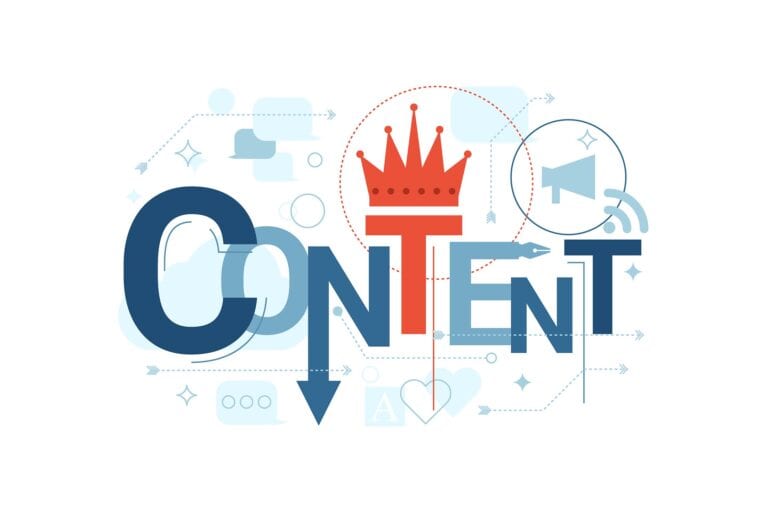Meta tags are snippets of text that describe a page’s content; they don’t appear on the page itself but only in the page’s code. Think of them as a mini-advertisement, a concise but compelling description of what users can expect to find on a webpage. While they are invisible to visitors, they are highly significant to search engines and the way content is interpreted and ranked.
In SEO, meta tags play a crucial role in influencing how search engines and users discover and perceive your website. Properly utilised, meta tags can significantly enhance a website’s SEO by improving its visibility and click-through rates from search engine results pages (SERPs). The most critical meta tags for SEO are the title tag, which serves as the title of your page in SERPs, and the meta description, which offers a brief summary of the page content. Both are instrumental in attracting users’ attention in the crowded digital space of search results.
Effective meta tags capture the essence of your website’s content and entice potential visitors to click through to your site. Optimising these tags can lead to improved page rankings, more organic traffic, and higher engagement rates, making them a fundamental element in any SEO strategy.

What are Meta Tags?
Meta tags are HTML tags that provide metadata about a webpage but do not appear on the page itself; instead, they exist in the page’s HTML code. Key types of meta tags include the title tag, which indicates the page title shown on SERPs; the meta description tag, which offers a brief summary of the page content; and meta keywords tags, which list keywords relevant to the page’s content.
Historically, meta tags were heavily utilised by SEO professionals to manipulate rankings by stuffing them with numerous keywords. However, search engines have evolved to prioritise content quality and user experience over mere keyword presence. Today, while meta keywords are no longer influential, the title tag and meta description remain critically important in SEO practices. They impact a site’s visibility and user engagement by influencing how search results are perceived and how likely users are to click through to a site. Proper use of these meta tags is essential for effective SEO.

The Most Crucial Meta Tags for SEO
Understanding the most crucial meta tags for SEO is essential for any webmaster or digital marketer aiming to improve their website’s search engine visibility and user engagement. Here’s a closer look at the key meta tags that can significantly impact your SEO efforts:
Title Tag
The title tag is arguably the most critical meta tag for SEO. It appears in the browser tab and as the clickable headline for a page in search engine results. An effective title tag should accurately reflect the content of the page while incorporating main keywords naturally. Best practices include keeping the title under 60 characters to ensure it displays fully in SERPs, making it specific to the page content, and placing important keywords toward the beginning. Crafting a clear, relevant, and enticing title can significantly improve your page’s visibility and attract more clicks.
Meta Description
The meta description tag, while not directly influencing rankings, plays a vital role in user click-through rates from SERPs. This brief summary appears under the title tag in search results and should entice readers to click on your link. To write compelling descriptions, include targeted keywords, provide a clear value proposition, and limit the length to about 155-160 characters to ensure the entire description is visible. A well-crafted meta description can effectively increase the likelihood of a user visiting your page.
Header Tags
Header tags, from H1 to H6, play a crucial role in organising content and improving the readability and SEO of a webpage. The H1 tag is particularly important as it typically acts as the primary headline and should include the main keywords. Subsequent headers (H2, H3, etc.) help break down content into scannable sections that enhance user engagement and facilitate search engines’ understanding of the page structure. Using headers to clearly outline content hierarchy aids both users and search engines, making it easier to digest information and assess the page’s relevance to search queries.

Additional Meta Tags That Impact SEO
In addition to the primary meta tags directly influencing SEO, several additional tags play crucial roles in refining how search engines interact with your content. Understanding and implementing these can further enhance your SEO strategy.
Robots Meta Tag
The Robots Meta Tag is pivotal for directing how search engines crawl and index pages on your website. It provides search engines with directives on whether to index a page and follow its links, which is critical for managing the visibility of certain content. Use this tag to prevent search engines from indexing duplicate content or private pages, ensuring that only the most relevant and useful content is available in search results. Proper use of the Robots Meta Tag can significantly improve a site’s SEO by streamlining the crawling process and focusing crawl budgets on important pages.
Alt Text for Images
Alt text (alternative text) for images is a type of meta information that improves web accessibility and helps search engines understand the content of an image. This is crucial not only for users who rely on screen readers but also for search engines that crawl and index images. Including descriptive, keyword-relevant alt text with your images can boost their discoverability in search results, particularly in image search, and contribute to the overall SEO performance of your page by providing clearer context to search engines.
Canonical Tag
The canonical tag is used to address duplicate content issues within your website. By specifying the “canonical” or “preferred” version of a web page, it helps prevent duplicate content penalties from search engines. This is particularly useful in scenarios where similar content exists on multiple URLs. Properly using the canonical tag ensures that search engines consolidate ranking signals to the specified URL, which helps maintain the site’s SEO integrity by avoiding dilution of page quality due to perceived duplicate content. This tag is a must-have in your SEO toolkit for managing content visibility and relevance effectively.

How to Optimise Meta Tags
Optimising meta tags is a fundamental SEO task that can significantly impact your site’s visibility and click-through rates. To ensure these tags are effective, it’s crucial to use strategic approaches for researching keywords, implementing the tags properly within your content management system, and tracking their performance. Here’s how you can optimise your meta tags for better SEO results:
Researching Effective Keywords
Choosing the right keywords for your meta tags is essential for improving your content’s relevance and search engine rankings. Utilise tools like Google Keyword Planner, Ahrefs, or SEMrush to identify keywords that are both relevant to your content and have a high search volume but moderate competition. Incorporate these keywords naturally into your meta tags, particularly the title and description tags. The goal is to reflect what users are actively searching for while accurately describing your page’s content.
Implementing Meta Tags in Wordpress
Most modern content management systems (CMS), such as WordPress, make it relatively easy to add and update meta tags. Plugins like Rank Math SEO can be installed to manage these tags directly from the dashboard. For implementing meta tags, navigate to the SEO section of your post editor where you can input your title tags and meta descriptions. Ensure these reflect your target keywords and are written in a way that encourages clicks from potential visitors.
Tracking and Analytics
To measure the effectiveness of your meta tags, especially in terms of search performance and user engagement, use tools like Google Analytics and Google Search Console. These platforms can help you track changes in your search engine rankings, organic traffic, and click-through rates associated with updates to your meta tags. Regularly reviewing these metrics allows you to fine-tune your approach, making necessary adjustments to optimise performance and achieve your SEO goals. Monitoring these analytics helps validate the impact of your meta tag strategies and guides further optimisations.
Common Mistakes in Using Meta Tags and How to Avoid Them
Meta tags are crucial for SEO, but common mistakes can undermine their effectiveness. Understanding these pitfalls and how to avoid them is key to leveraging meta tags to boost your SEO.
One frequent error is neglecting relevance when crafting meta tags. For example, stuffing meta tags with irrelevant keywords can confuse search engines and potential visitors, harming your site’s credibility and rankings. Always ensure that your title tags and meta descriptions accurately reflect the content of their respective pages and include pertinent keywords naturally.
Another common mistake is duplicating meta tags across multiple pages. This can lead to content cannibalisation, where search engines struggle to determine which page to prioritise, potentially diluting the visibility of your pages in search results. Make sure each page has unique meta tags that specifically describe that page’s content.
Additionally, some webmasters overlook the importance of the length of meta tags. Titles that are too long get cut off in SERPs, and overly lengthy descriptions may not hold the user’s attention. Aim for title tags that are 50-60 characters long and meta descriptions around 155-160 characters to ensure they display properly and effectively capture user interest.
To avoid these errors, regularly review and update your meta tags as part of your SEO audits, ensuring they remain effective and continue to contribute positively to your SEO efforts.

Meta Tags and User Experience
Meta tags play a significant role in bridging SEO and user experience (UX), serving as a critical first point of interaction between your website and potential visitors on search engine results pages (SERPs). Properly utilised, meta tags can significantly enhance how users perceive and interact with your site even before they visit.
The title tag and meta description, in particular, are pivotal in setting expectations for what users will find on your webpage. A well-crafted title tag acts as the headline of your content in SERPs, capturing interest and indicating the relevance of your page to the user’s search query. Similarly, the meta description provides a concise preview of the page content, serving as a snippet that can persuade users to click through to your site. Together, these meta tags form a mini-advertisement that can effectively communicate the value of your page and set it apart from competitors in the listings.
By accurately and enticingly summarising the content of the page, meta tags help ensure that the traffic coming to your site is well-targeted and more likely to engage with your content, enhancing user satisfaction and retention. This alignment of user expectations with actual content not only improves UX but also boosts your site’s SEO performance by reducing bounce rates and increasing time on site, both important metrics for search rankings.
The Importance of Meta Tags
Mastering meta tags is paramount for enhancing your website’s SEO performance and user experience. These HTML tags serve as concise but powerful tools to communicate your page’s content and value proposition to both search engines and potential visitors. By optimising meta tags such as the title tag, meta description, header tags, and others, you can significantly improve your site’s visibility in search engine results pages (SERPs) and attract more organic traffic.
Effective meta tags capture the essence of your content, entice users to click through to your site, and ultimately contribute to higher engagement rates and better search rankings. However, it’s essential to avoid common mistakes such as keyword stuffing, duplicate content, and overly lengthy tags, as these can undermine your efforts and harm your site’s credibility.
By understanding the role of meta tags in SEO and user experience and implementing best practices for research, implementation, and tracking, you can leverage these tags to their full potential and drive meaningful results for your website.
Ready to unlock the full potential of your website? Why not contact e-innovate to review your SEO strategy and get the most out of your online presence today?




